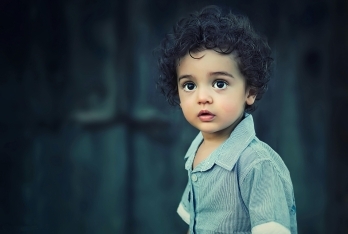


Psychologist Fatma İgdeci
Emotion Regulation in Children
Emotion regulation is the ability to recognize, interpret, and manage our emotions as a priority. How we relate to emotions affects how we experience the world. When an emotion comes, is it better to get lost in it and not know what to do, or to recognize it and get one step closer to being able to control it? This is the whole issue.
When we look at the emotional world of children, we see that they feel something just like adults, but they don't know exactly what it is and they have no idea how to express it. Starting from the womb, the baby's experience, interaction, and attachment style with its mother are the most important factors affecting its emotional development. In later childhood, we see that they develop this skill by talking about emotions and focusing on emotional clues.
The moments when the child is unable to regulate his/her emotions are due to his/her inability to define the state he/she is in. Underlying children's challenging behavior is often an unmet need, sometimes an intense emotion, hurt, or stress. Because their nervous system is still developing, they find it difficult to cope with certain emotions. Whether a child is aggressive, such as hitting a friend in a fit of rage, crying and throwing himself on the floor, or on the contrary, exhibiting timid or withdrawn behaviors, there are difficulties in emotion regulation. Seeing, hearing, and being accompanied with compassion by a parent regulate and calm the child's nervous system. His brain needs to learn how to regulate emotions. It needs to be known that it can only do this with the help of its parents.
When we accept his/her emotions unconditionally, when we open space with compassion, we start to give the right support. Because that emotion does not belong to us, it belongs to the child. Because of what need is he/she in that emotion? How will we fulfill that need? This is the part we are responsible for. Our issue is not to eliminate the behavior exhibited by the child but to find the answer to what kind of relationship we should be in at that moment so that the child can express this difficult emotion healthily and be empowered to calm down. Such an approach opens the door to a solid lifelong skill.
The way a child reacts to emotions, how he or she responds to them, and how he or she tolerates them is largely shaped by the relationship with his or her parents in early childhood. Children watch and model us. Yelling teaches a child to yell; losing oneself teaches a child to lose oneself. As a parent, how do we express our emotions, how do we cope and how do we calm ourselves?
A child's challenging behavior can trigger memories from our childhood, it's a difficult process. How can I connect with my child when my system is preoccupied with itself? Here I need to first heal my childhood wounds as a parent. I need to listen to the feelings of the child in me, show compassion, and give the love it needs so that it can heal. This is how one can repair the uncontacted, unsatisfied needs of one's childhood with the current adult side.
When we examine brain imaging systems, it is worth mentioning the changes that take place in the brain of a parent when his or her child causes him or her distress. It is observed that the brain of a parent who was listened to, stroked, and raised with a secure bond of love in their childhood is filled with oxytocin (happiness hormone). The areas of the brain that enable them to care for someone are activated. In contrast, a parent who has not built a secure attachment shows a conflict in their stress system between closeness and escape. The amygdala (the area responsible for emotional responses) develops a defense mechanism; it signals attack or flight. Even in light of this information, we can see the reflections of our past processes in the present. Even acknowledging this can help to prevent outrageous reactions.
So far, we have understood how emotion regulation works for the child and the parent, but how can children transform their emotions and how can we provide this skill?
1. Making sure that there are no physical needs (hunger, sleep, toilet needs, etc.)
2. Covering all positive and negative emotions and reflecting/mirroring them to the child (You are very angry, you are very angry, it is not easy to deal with these emotions, this is how you show your anger by shouting)
3. Physical contact, if desired (affectionate touch, expressions of comfort, stroking, massage)
4. The power of play (playing undirected games without any interference. In this way, painful, accumulated emotions are released and relaxed).
5. Reviewing our ability to regulate emotions
6. To explain that emotions also have a lifespan
7. Exercise together